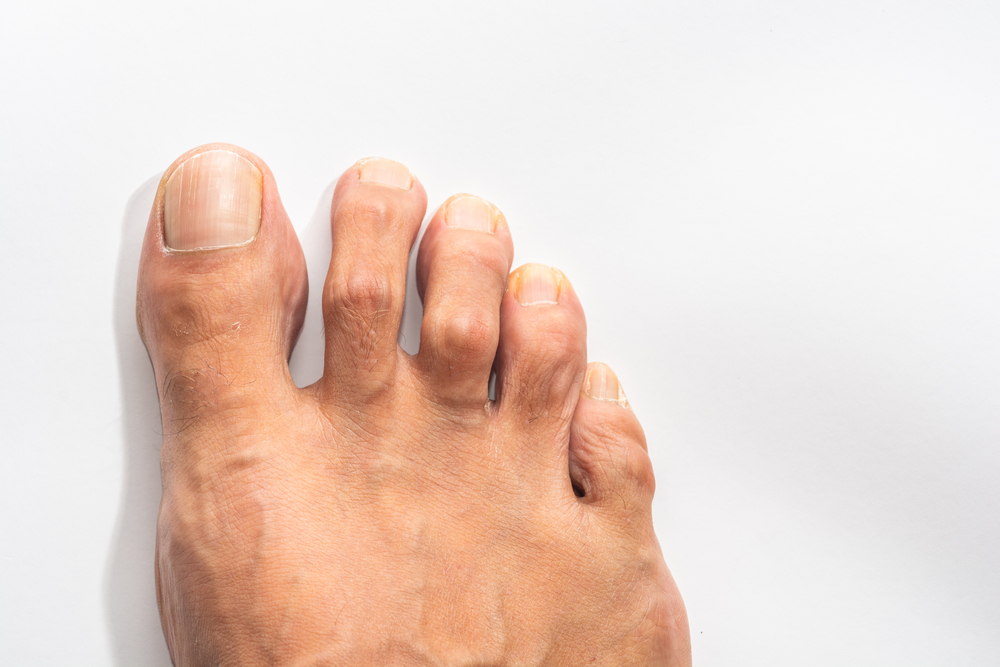Claw toes are a medical condition in which the toes of the foot are curled up in a flexed position, like the talon of the eagle. It usually happens to the small toes (2-5) of the foot.
The toes can be rigid or flexible sometimes with associated pain. It is commonly associated with a high arched (cavus) foot type, muscle imbalances or even some neurological conditions. This article will bring you everything about claw toes.
What caused it?
The most prominent hypothesis is that the imbalance of foot muscles causes some of the muscle groups to over-contract. The over-contracted muscles tighten the tendons and bend the joints of the small toes. Many factors can result in muscle imbalances:
- Poorly fitted shoe wear
- Nerve damage: chronic alcohol use, diabetes etc
- Trauma
- Inherited conditions
- Rheumatoid arthritis or osteoarthritis

What are the symptoms?
The clinical definition of claw toes is that the toes of the foot are curled up in a flexed position, as shown in the picture above. The toes are bent upward from the joints at the base but bent downward at the middle joints.
It can cause pain as the toes get pushed down into the soles of the shoes. Usually, toes are flexible in the early stages of symptom onset. Later on, the toes become more and more rigid and patients find it hard to move their small toes at all.
Claw toes are more than just bent toes however, additional symptoms include:
- Corns
- Calluses
- Blisters at the pressure point
- Redness and swelling
Patients are strongly advised to consult a doctor or podiatrist at the earliest possible occasion when symptoms appear. Diagnosis is usually based on clinical presentations. Additional neurological physical examination might be necessary to rule out more malignant causes.
How to treat it?
It is a general medical principle that doctors should avoid surgeries as much as they could. Conservative management is still the key and first-line treatment for claw toes. Most of the plans can be easily achieved at home:
- Wearing well-fitted shoes – avoid tight shoes and high-heels
- Stretch the toes to their normal position with your hands
- Tape the toes to their normal position
- Perform certain strength activities to correct muscle imbalance
If conservative management fails to alleviate the symptoms, surgical interventions can be considered:
- Tendon lengthening or rerouting
- Bone shortening
- Steel pin insertion
- Toe fusion
Currently, surgery remains the only definitive treatment option for claw toes. But there are still risks of reoccurrence. However, most patients are managed conservatively.
How to prevent it?
Though there might be a genetic component in the cause of claw toes, it is usually preventable. Things to consider include:
- Wear comfortable shoes: shoes that are spacious and made up of soft materials.
- Avoid high heels: high heels are designed so that more pressure is exerted onto your toes.
- Exercise: toe exercises like picking up small objects with toes can prevent muscle imbalances.
Once symptoms start to develop, see a health practitioner as soon as you can. Claw toes without treatment or intervention usually get worse and become permanent. Walking and running can become very painful and significantly limit your ability to perform daily activities. Early surgical intervention is usually associated with a higher chance of healing as well.










